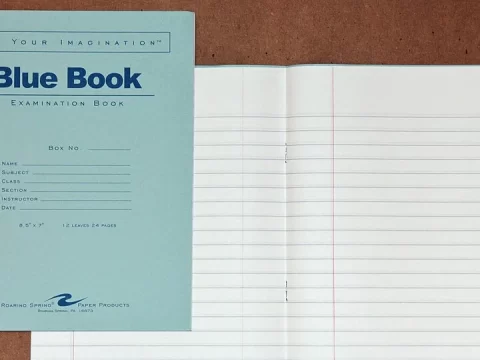
Ransomware attacks are way down
November 24, 2025
Exclusive: US senators call for probe of scam ads on Facebook and Instagram
November 24, 2025If you are feeling a little less “ho-ho-ho” and a little more “bah humbug” this year, you aren’t alone. The recent government shutdown, which mercifully ended on Nov. 12, left many households tightening budgets amid lingering uncertainty, making this holiday season feel particularly fragile. Money is tight, uncertainty is high, and for many of us, the idea of a lavish Christmas feels irresponsible, if not impossible.
But here is the good news: We are living in the golden age of consumer artificial intelligence. While AI can’t print money (yet), it can act as a force multiplier for your creativity, a ruthless hunter for bargains, and a creator of deeply personal gifts that cost a fraction of store-bought alternatives.
Here is how you can use the tools available right now to save money, from your Christmas cards to the tree.
Let’s explore how today’s AI tools can make Christmas more affordable, and we’ll close with my Product of the Week: Lenovo’s ThinkBook Plus Gen 6 Rollable, with a screen that nearly magically extends from a portable 14-inch to 16-inch with the push of a button.
The AI-Augmented Christmas Letter
The traditional “brag sheet” Christmas letter often sounds tone-deaf, especially in a lean year. This is where AI can help you strike a balance between sharing news and maintaining humility and warmth.
Drafting with Empathy: Tools like ChatGPT or Claude are excellent at tone calibration. Instead of staring at a blank screen, paste your bullet points of the year’s events into the chatbot and ask it to “Write a warm, humorous, empathetic Christmas letter that acknowledges it has been a tough year financially but focuses on gratitude and family resilience.”
Visualizing the Narrative: Text is only half the battle. You can now create custom illustrations that break the monotony of text walls. Instead of a generic clip-art Santa, use image generators like Midjourney or DALL-E 3 (available via ChatGPT Plus) to create scenes that match your family’s vibe.
- Idea: If your family loves hiking, generate an image of “a family of four diverse hikers reaching a snowy peak at sunset, digital art style, warm lighting.”
- Placement: Use free design tools like Canva, which has integrated AI “Magic” tools to help you lay out text and images seamlessly. You can place your AI-generated family portrait at the top and wrap your text around it for a professional newsletter look without the print-shop cost.
AI Agents Spot Better Holiday Deals
We’ve had search engines; now we have “shopping agents.” The shift from keyword searching to agentic AI — where the AI reasons on your behalf — is a massive money saver.
Finding the Right Gift
If you are struggling to find a gift for a spouse who loves 1980s sci-fi but already owns everything, stop browsing Amazon categories randomly. Ask an AI agent.
The new AI-infused Google Shopping allows you to ask complex queries like, “What is a thoughtful, under-$50 gift for a man who loves ‘Blade Runner’ but hates clutter?” It will scour reviews and forums to suggest items like a “Tears in Rain” monologue print or a specific type of whiskey glass, rather than just a generic movie poster.
The Deal Hunter
Once you identify the gift, do not pay full price. AI browser extensions like Honey (now PayPal Honey) or price-tracking features in Microsoft Edge’s Copilot automatically scan for coupons and price history.
Pro Tip: If you are eyeing a big-ticket item, use an AI tracker to watch the price. We are seeing volatility due to lingering supply-chain disruptions following the shutdown, and AI can alert you the second a price drops to its historical low.
Turning Family Photos Into AI Art
The most memorable gifts are often the ones that show you “see” the person. This year, you can use generative AI to put your children, spouse, or friends into their favorite pop culture worlds, which is significantly cheaper than buying licensed merchandise and infinitely more personal. The process:
- Get a Clean Photo. Start with a clear, well-lit photo of the subject’s face.
- Choose Your Generator. Services like Fotor and YouCam have specialized “superhero generators” or “face swap” tools.
- Prompt. Upload the photo and use a prompt to define the scene. For example, for a kid who loves space, “A young boy in a futuristic orange spacesuit standing on the surface of Mars, cinematic lighting, highly detailed, 8K.” Or, for the partner who loves fantasy, “A warrior woman in silver armor riding a white griffin, high fantasy style, oil painting aesthetic.”
- Refine and Upscale. Most initial generations are lower resolution. Use an AI upscaler, often built into these tools, to ensure the image is crisp enough for printing.
From Screen to Reality
Once you have the image, don’t just leave it on a phone. Upload it to a service like Shutterfly or Printful to put it on a canvas, a puzzle, or even a blanket. A custom puzzle of Dad as a Jedi is a gift that provides entertainment and is a keepsake, usually for under $30.
Holiday Shipping Deadlines
This serves as your critical warning: While AI generates art in seconds, physical production and shipping are subject to the laws of physics and logistics networks still recovering from the shutdown.
If you are planning print-on-demand gifts such as canvases, mugs, or custom books:
- The “Safe” Zone: You must order by Dec. 8.
- The “Risky” Zone: Dec. 9 to 14 will likely require expedited shipping, which erases your cost savings.
- The “Too Late” Zone: After Dec. 15, you are likely printing that image on your home printer and putting it in a drugstore frame.
Services like nPhoto and other professional labs have already set strict cutoff dates. Do not let the speed of AI lull you into a false sense of security regarding physical delivery.
Wrapping Up
The shutdown and the economy have dealt us a tough hand this year, but constraint often breeds creativity. By using AI, we can move away from the “add to cart” panic of consumerism and toward a season of thoughtful, personalized creation.
We can write letters that actually mean something, find gifts that show we listen, and create art that puts our loved ones center stage. It takes a little more time than swiping a credit card, but in a year where every dollar counts, the effort and the savings will be the best gifts of all.
If Santa Claus were a tech analyst, he’d likely be trading in his dusty ledger for the Lenovo ThinkBook Plus Gen 6 Rollable. (Note: At the time of publication, Lenovo’s site has shown an on-again, off-again “no longer available” notice, but Lenovo tells me the Rollable is only temporarily out of stock.)
As 2025 draws to a close, I’ve reviewed a sleigh-load of laptops, but this one is hands-down my favorite notebook of the year. In a market saturated with iterative updates and “safe” designs, Lenovo’s ThinkBook Plus Gen 6 stands out as being both truly different and genuinely useful. It’s the kind of innovation that doesn’t just sit on a desk; it performs a magic trick.
The Gift of Screen Real Estate
The party piece of this machine is, of course, the display. Out of the box, it looks like a premium, albeit slightly thick, 14-inch notebook. But with the push of a button (or a software trigger), the 14-inch OLED panel motorizes upward, unrolling to reveal a massive 16.7-inch vertical workspace.
The screen expansion isn’t a gimmick; it’s a productivity dream. The aspect ratio shifts from a standard view to a towering 8:9 format, effectively giving you two 16:9 screens stacked on top of one another. For writers, coders, and analysts, this means you can see nearly double the number of lines in a spreadsheet or document without scrolling. It feels like unwrapping a bigger present every time you sit down to work.
Performance and Status
Under the hood, this is a serious machine. It is powered by the new Intel Core Ultra 7 (Series 2) Lunar Lake architecture, which provides excellent power efficiency and strong performance for productivity tasks. Paired with 32GB of RAM and the stunning 120Hz OLED clarity, it handles heavy workflows with grace.
However, the price tag is steep at around $3,499. But for that price, you aren’t just buying specs; you’re buying a status symbol. When I use this in a coffee shop or a conference room and hit that extend button, conversation stops. It immediately prompts people to ask about it, usually with a palpable sense of envy. It is the tech equivalent of pulling up in a concept car.
The Three Ghosts of ‘Christmas Grievances’
Despite my adoration for this device, it isn’t perfect. Like a complex toy on Christmas morning, it comes with warnings. Here are its distinct shortcomings:
- Fragility: Because it relies on a motorized rolling mechanism and a flexible screen, it is inherently more fragile than a standard rigid ThinkPad. It is rated for about 20,000 rolls, but you will want to handle this with kid gloves.
- No Touchscreen: To keep the flexible panel thin and rollable, Lenovo had to sacrifice the digitizer layer. If you are used to tapping your screen to scroll or zoom, you will find yourself poking a non-responsive piece of glass.
- “Coach Class” Caution: This is a critical travel tip: Do not extend the screen while flying in coach. If you have the screen fully extended upwards and the passenger in front of you suddenly reclines their seat, the geometry can cause the top of your screen to be crushed or snapped. Furthermore, the extended height puts the keyboard awkwardly close to your body in tight quarters anyway. Keep it rolled down until you land.
The Lenovo ThinkBook Plus Gen 6 Rollable is a daring, beautiful, and highly functional piece of future-tech. It has its quirks, but it brings a sense of wonder back to personal computing that has been missing for a long time. I really love this laptop, making it an ideal pick for my Product of the Week.




